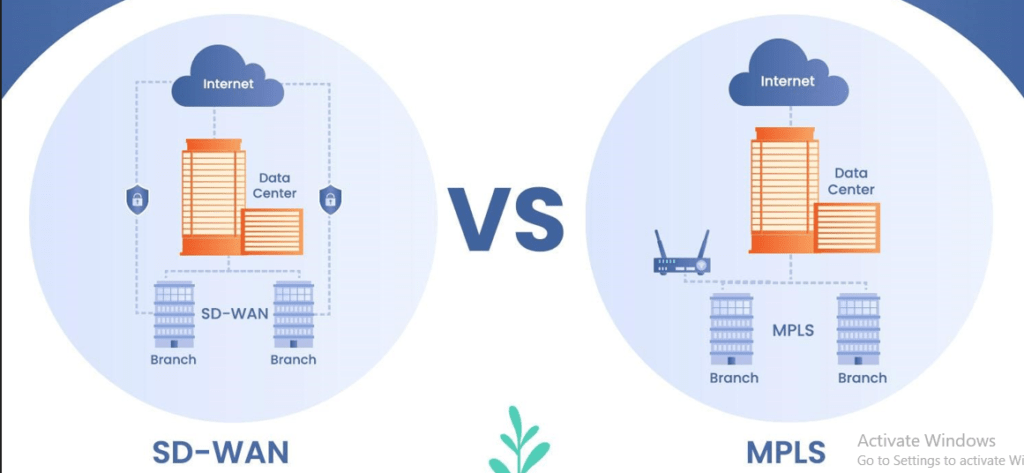
Network connectivity is the backbone of any successful organization in the business world. With the ever-increasing demand for seamless and reliable data transmission, traditional networking solutions are facing tough competition from modern alternatives. Among these, sd wan vs mpls (Cisco SD-WAN and MPLS) are two popular options that promise to transform how businesses connect and operate. This article explores the essential characteristics and advantages of both Cisco SD-WAN and MPLS, conducting a comprehensive comparison of their strengths and weaknesses. The aim is to equip you with the knowledge needed to make a well-informed decision for your business.
1. The Rise of SD-WAN: Unveiling the Game-Changer
The rapid evolution of cloud-based applications and remote workforces has necessitated a more agile and efficient networking solution. This is where Software-Defined Wide Area Network (SD-WAN) comes into play. Unlike traditional MPLS, SD-WAN leverages the power of software to manage network traffic and optimize connectivity intelligently. The flexibility and cost-effectiveness of SD-WAN have made it a game-changer for businesses of all sizes.
2. MPLS: The Reliable Yet Expensive Legacy
Multiprotocol Label Switching (MPLS) has been a reliable choice for years, ensuring secure and predictable data transmission between remote locations. However, its legacy architecture comes with certain limitations, such as high costs and rigid configurations. MPLS requires a substantial upfront investment and long lead times for implementation, which may not align with the dynamic demands of today’s businesses.
3. SD-WAN vs. MPLS: Performance and Scalability
One of the key considerations when choosing between SD-WAN and MPLS is performance. MPLS generally offers a high level of reliability and low latency, making it suitable for mission-critical applications. On the other hand, SD-WAN excels in scalability and adaptability. It allows for easy integration with existing network infrastructure and offers dynamic traffic routing, ensuring optimal performance for various applications.
4. Cost-Effectiveness: The SD-WAN Advantage
In the battle of SD-WAN vs. MPLS, cost-effectiveness is a significant factor. MPLS can be expensive, especially for businesses with multiple branch locations. The costs of dedicated lines and hardware can quickly add up. On the contrary, SD-WAN offers a more budget-friendly approach, as it allows organizations to leverage affordable internet connections while maintaining a high level of performance through intelligent traffic management.
5. Network Visibility and Control: The SD-WAN Edge
Visibility and control over the network are vital for businesses to optimize performance and security. SD-WAN provides granular insights into network traffic, application performance, and user behavior. With a centralized management console, IT teams can easily monitor and control the entire network, making troubleshooting and policy enforcement more efficient.
6. Embracing the Future with SD-WAN
As the business landscape continues to evolve, SD-WAN presents a future-proof solution that can keep pace with emerging technologies and connectivity demands. Its cloud-native approach and support for a wide range of connection types, including broadband, 4G, and 5G, make it the preferred choice for organizations looking to stay agile and competitive.
7. Making the Decision: SD-WAN or MPLS?
When deciding between SD-WAN and MPLS, there is no one-size-fits-all answer. Each solution has its strengths and is better suited for specific use cases. For businesses seeking cost-efficiency, scalability, and flexibility, SD-WAN emerges as a strong contender. However, those requiring strict SLAs and predictable performance may still find MPLS a viable option.
In conclusion, the choice between sd wan vs mpls boils down to understanding your organization’s unique requirements and priorities. SD-WAN’s versatility and cost-effectiveness appeal to businesses embracing digital transformation and seeking agile networking solutions. On the other hand, MPLS continues to be a reliable choice for mission-critical applications that demand stringent performance guarantees.
To make an informed decision, consider partnering with experienced network service providers who can assess your specific needs and help tailor the ideal solution for your business. Embrace the future of networking with Cisco SD-WAN or rely on the reliability of MPLS – the decision is yours to make.
Whichever path you choose, investing in a robust networking solution is crucial to drive innovation, enhance productivity, and empower your business to thrive in the dynamic digital landscape.




